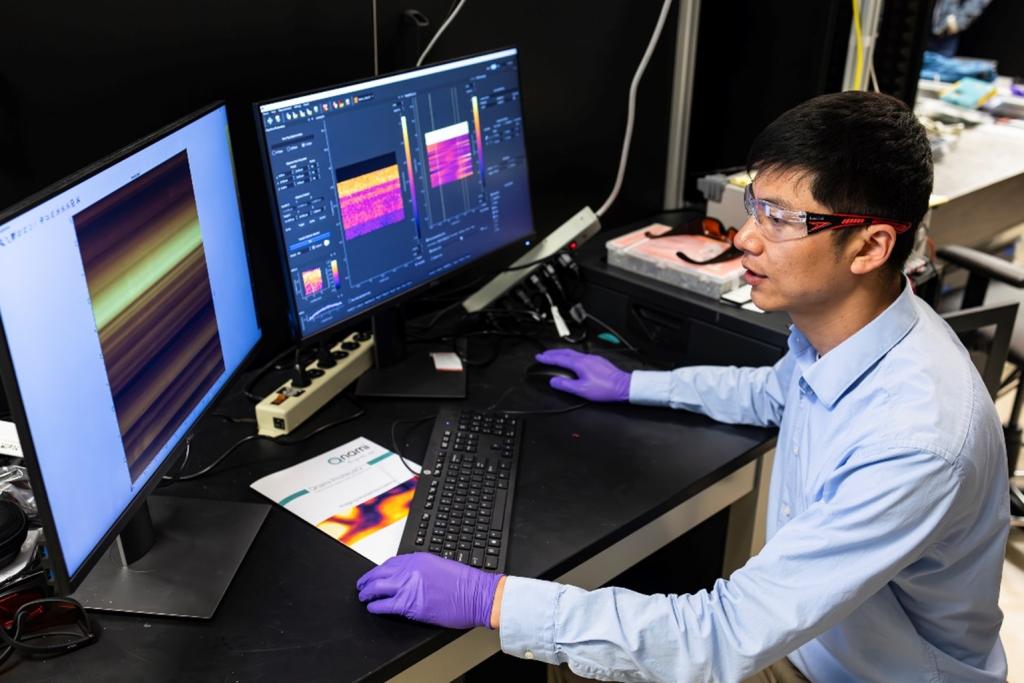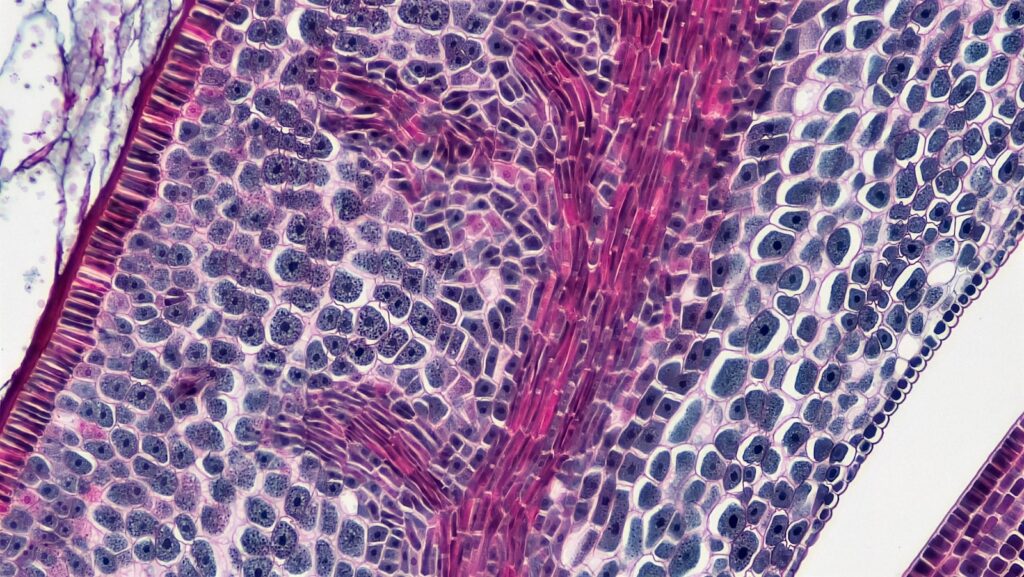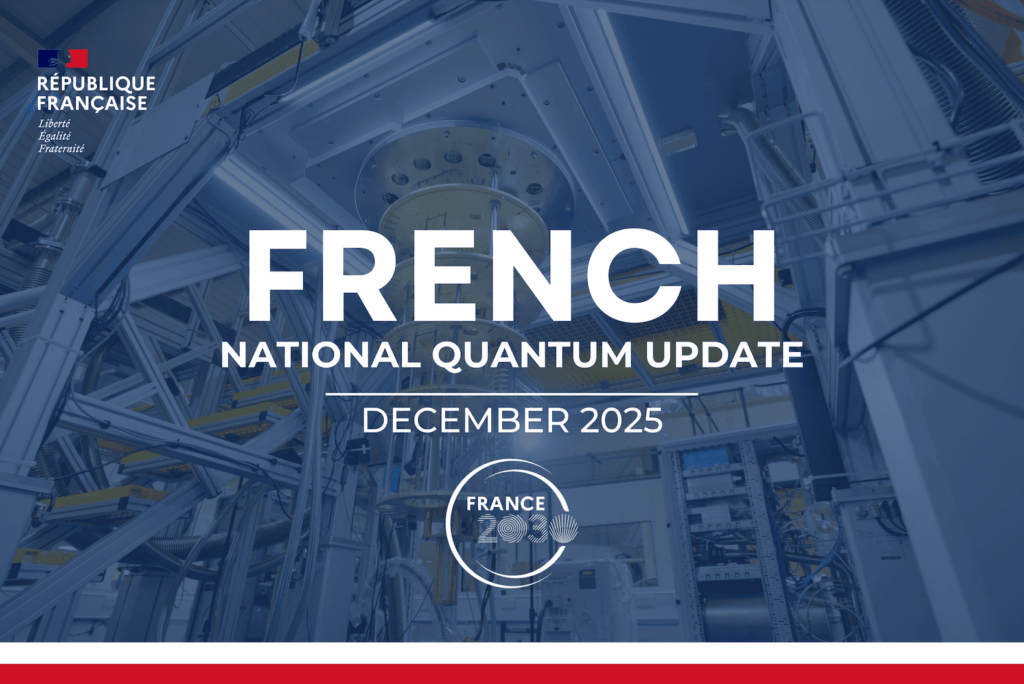Insider Brief
- Huan Zhao, a Eugene P. Wigner Fellow at Oak Ridge National Laboratory (ORNL), is advancing quantum information science by bridging quantum materials with technology.
- Zhao’s early education was influenced by his grandfather, and his academic journey led him to the U.S., where he earned a Ph.D. and contributed to discoveries in energy-efficient memory and materials with unique light-splitting properties.
- At ORNL, Zhao leads projects in solid-state quantum light sources, operates a scanning nitrogen-vacancy microscope for precise magnetic measurements, and emphasizes education’s role in societal progress, aligning with his belief in accessible science.
- Image and Story: U.S. Department of Energy’s Oak Ridge National Laboratory
PRESS RELEASE — Huan Zhao has wanted to learn about the world around him for as long as he can remember. Now, his work helps push the limits of what humankind can observe and understand.
As a Eugene P. Wiger Fellow at the U.S. Department of Energy’s Oak Ridge National Laboratory, Zhao aims to bridge quantum materials with quantum information technologies.
Zhao’s journey into the quantum world began in a small town in northern China, where only a few dozen people made it to college each year. He was strongly influenced by his paternal grandfather, a retired teacher who instilled in him a love for learning and a sense of curiosity about the natural world. Zhao’s grandfather began teaching him mathematics before he began primary school and would show him the wonders of the night sky with a flashlight in the backyard, pointing out the Milky Way.

“My grandfather always cared more about what he contributed to the world and the people around him compared to how much money he made,” Zhao recalls. This philosophy deeply resonated with Zhao and motivated him to pursue a career in science.
After moving to the United States for graduate school, Zhao became the first person in his family to earn a doctorate, receiving his degree in electrical engineering from the University of Southern California, orUSC.
Working alongside his mentor, Professor Han Wang, his thesis explored the applications of novel semiconducting materials. This work ultimately led to the creation of the world’s most energy-efficient class of resistive memory devices and the discovery of materials with extremely high broadband optical birefringence — meaning they can split light far more effectively than virtually any other material.
Zhao’s dedication and talent were recognized with the Viterbi Dean’s Doctoral Fellowship from USC and a prestigious Top Paper Award from Nano Research in 2017.
After earning his doctorate, Zhao’s curiosity and desire to change the world took him to successive postdoctoral fellowships at Los Alamos National Laboratory and the California Institute of Technology, where he performed research in quantum optics and optical imaging respectively. Zhao credits excellent mentors and collaborators, including his Caltech advisor Lihong Wang and 1999 Nobel laureate Ahmed Zewail, for introducing him to the “wonderland” of ultrafast imaging science.
Zhao serves as the principal investigator in a Laboratory Directed Research and Development project exploring cutting-edge solid-state quantum light sources capable of operating on the wavelengths used in telecommunications such as fiber internet and data transmission.
“While advancements in science and technology drive humanity’s progress, fundamental education is key to raising the baseline. It empowers ordinary individuals to live with greater convenience and dignity.” – Huan Zhao, Wigner Distinguished Staff Fellow
Zhao also serves as the technical contact for the scanning nitrogen-vacancy (NV) microscope at the Center for Nanophase Materials Sciences (CNMS), a DOE Office of Science user facility at ORNL. The NV microscope uses specially designed diamonds with a single nitrogen atom embedded next to a vacancy in the carbon lattice to measure extremely small magnetic fields. These probes can detect miniscule changes in the quantum spin of a material, allowing for some of the most precise electromagnetic measurements to date.
“Our scanning NV microscope is so sensitive that you can actually measure the tiny differences in the earth’s magnetic field at different locations in the lab,” Zhao added. These extremely precise measurements facilitate fundamental research across the physical and biological sciences.
Zhao’s educational background, subject matter expertise and diverse research interests and diverse research interests make him an excellent candidate for operating and iterating on NV microscopes. “I know how they work, I can optimize them, and I can build one from scratch instead of needing to buy a commercial one,” he says.
His background also enables efficient collaborations with the NV microscope’s users. “I have lots of users who collaborate with me and ask me to handle their samples because I have a background in materials, optics and semiconductors, microelectronics and so on,” Zhao said. “Most of my users are in these fields so I can easily understand what their research demands, which makes it easier to interact and to help them to take better measurements.”
Zhao credits his division director Karren More and three ORNL Distinguished Staff Fellowship mentors — An-Ping Li, Benjamin Lawrie, and Stephen Jesse — with supporting his successful transition from university research to work at a national lab.
“We have so many more resources and space here and we tackle much bigger problems, so collaboration is essential,” he says. “They have given me so many tips on developing my career here and so much advice on making the transition to being a national lab researcher.”
Outside of his professional endeavors, Zhao is an avid outdoor enthusiast, where he delights in the mechanics and sensations of biking, skiing and hiking. He is also a devoted parent to two adopted cats who happily keep each other company during his long hours at the lab.
Perhaps embodying the values instilled in him by his late grandfather, Zhao’s commitment to science is matched by his belief in the fundamental importance of education equity.
“While advancements in science and technology drive humanity’s progress, fundamental education is key to raising the baseline,” Zhao added. “It empowers ordinary individuals to live with greater convenience and dignity.”
ORNL’s Distinguished Staff Fellowship program aims to cultivate future scientific leaders by providing dedicated mentors, world-leading scientific resources and enriching research opportunities at a national laboratory. Fellowships are awarded to outstanding early-career scientists and engineers who demonstrate success within their academic, professional and technical areas. Fellowships are awarded for fundamental, experimental and computational sciences in a wide range of science areas. Factsheets about the fellows are available here.
UT-Battelle manages ORNL for DOE’s Office of Science, the single largest supporter of basic research in the physical sciences in the United States. DOE’s Office of Science is working to address some of the most pressing challenges of our time. For more information, visit energy.gov/science. — Galen Fader















